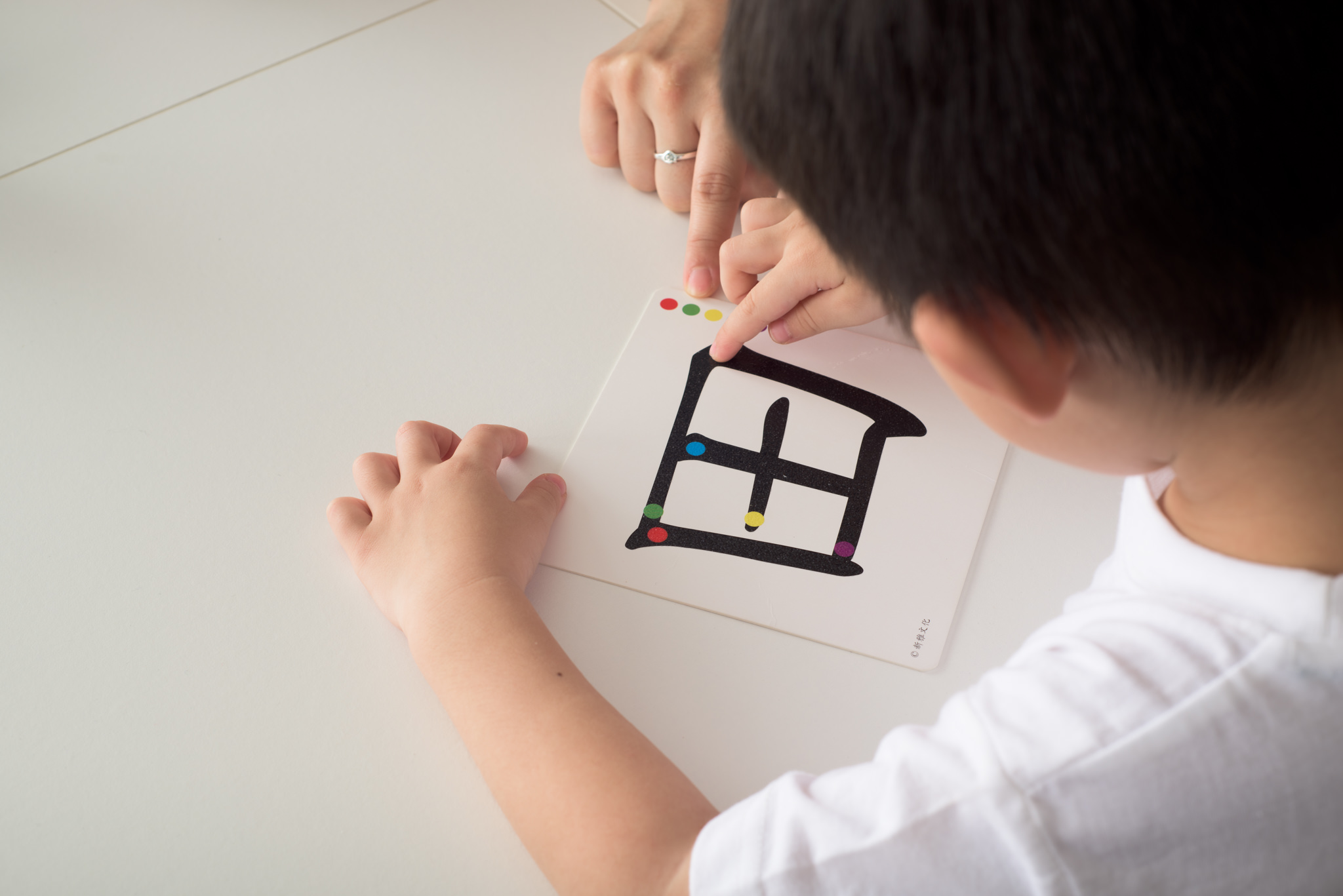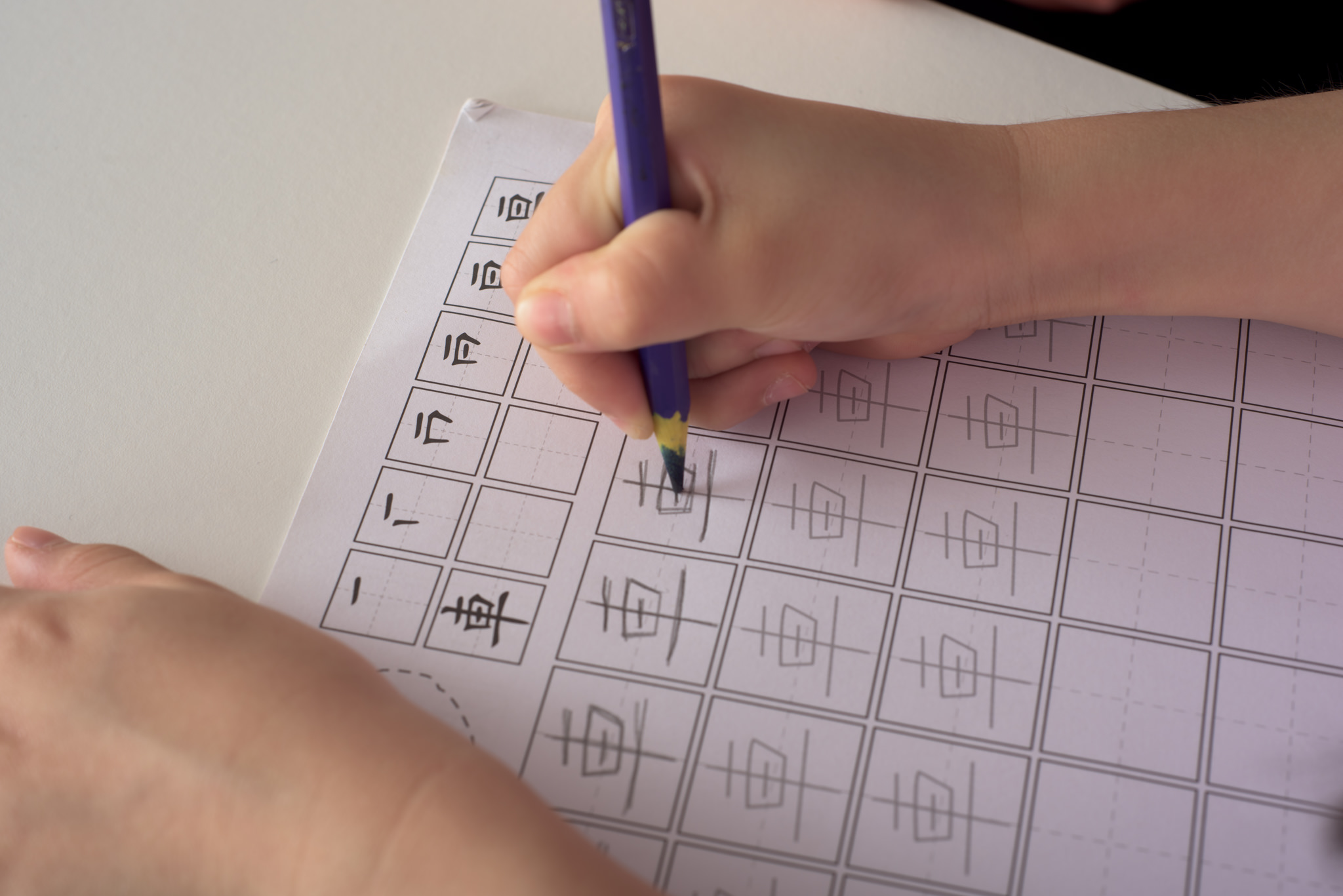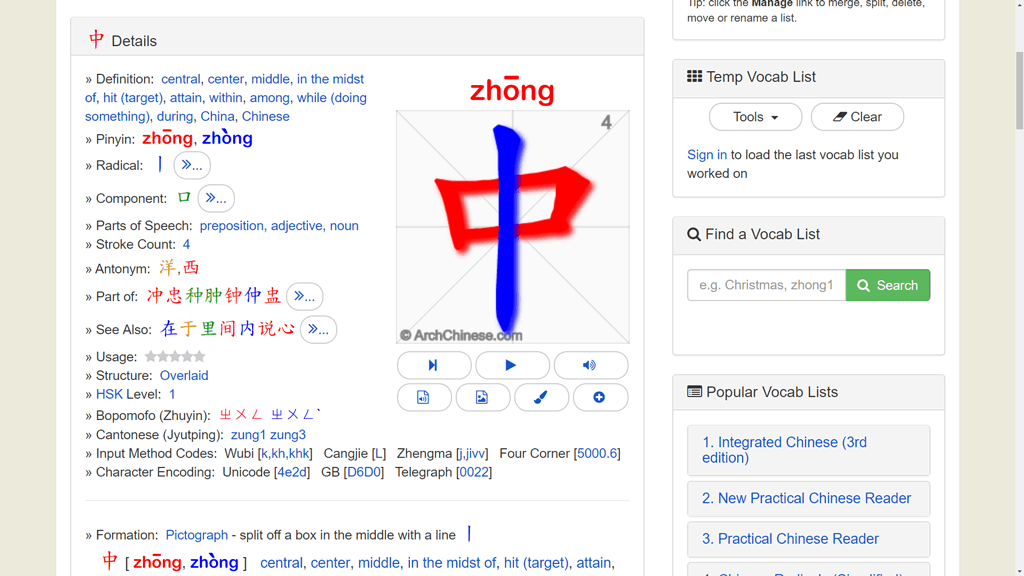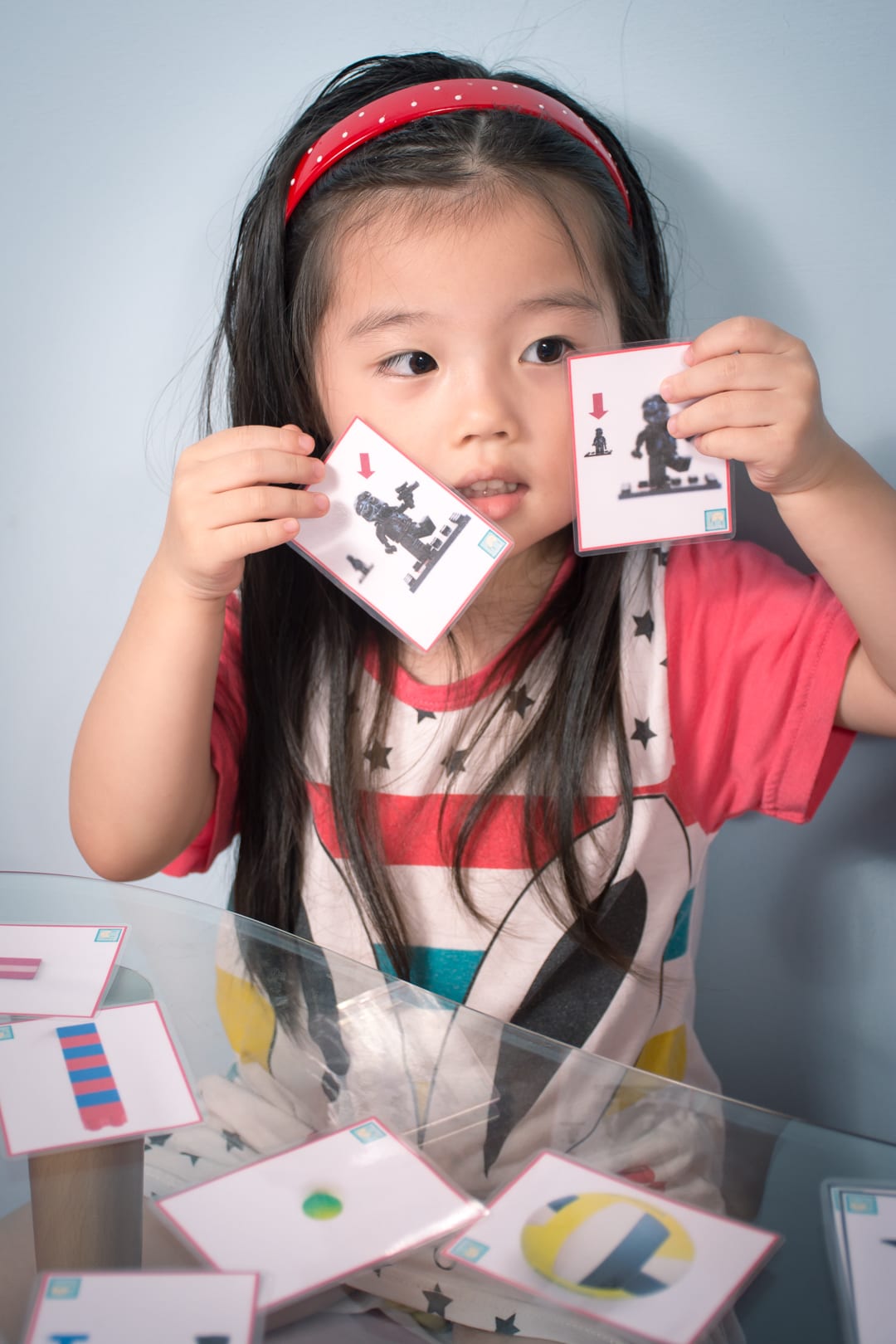Writing in Chinese seems like the hardest skill to master, especially for those are not attending any Chinese schools.
But we should not give up on this important skill.
What can we do to help our children start writing Chinese characters?
Today, I would like to share 10 Tips for Teaching Young Children to Write Chinese Characters: from pre-writing activities, recognizing Chinese characters, involve in reading, to using different media for practice, and teach the right stroke order.
There is also a 6-page Chinese Practice Sheet FREEBIE for you to download at the end of this blog post, so you can start teaching your kids writing in Chinese characters right away.
The post contains affiliate links, which means I may receive a small commission, at no cost to you. If you make a purchase through a link. See the Disclosure for more details.
Table of Contents
* Please scroll down to download a Freebie.
Working on copybooks, completing heavy loads of penmanship homework, and memorizing different passages and paragraphs for dictation was part of my life growing up in Hong Kong.
No one likes learning this way, but, sadly, it seems like this is the only way to learn how to write in Chinese. This problem is always causing headaches for students and their parents.
I know there are no shortcuts for my own kids when it comes to learning Chinese writing: repeated practice is the key.
However, can I make it a more pleasant and bearable experience?
Homeschooling allows me to help each child to learn at their own pace, and to reinforce their learning with different methods, games, and materials.
Today, I would like to share some tips on how I teach my kids to write Chinese characters, and these tips work for both fluent and non-fluent parents.
10 Tips for Teaching Young Children to Write Chinese Characters
Tip #1: Prepare for Success
With pre-writing activities, recognizing Chinese characters, and be your child’s example
Pre-Writing Activities
To help them strengthen fine motor skills and gain more confidence, your child can prepare to write with pre-writing activities.
For example
- Scissors skills
- Shaping play-dough
- Helping with chores
- Coloring & painting
- Tearing paper into shapes
- Using a tweezer to pick up small objects
- Using clothespins to clip things together.
* If you want to learn more about pre-writing activities, you won’t want to miss this article from Teaching Mama.
Start Recognizing Basic Chinese Characters
Pick some Chinese books that are clear, big, and easy to read so your child can recognize them easily.
Any type of reading material with any simple Chinese characters will work too: such as flashcards, posters, Chinese labels, photos, and decoration.
The more Chinese characters your children get to see every day, the easier it will be for them to learn how to write them.
Be an Example
Having a role model is essential for children because they love to do what their parents are doing.
Imagine how powerful it will be for your children to watch you practice writing Chinese or calligraphy.
What a great message you are sending to your child by being their example.
Tips #2: Recognizing Chinese Characters’ Structure through Reading
Recognizing Chinese characters always go first, then writing after.
- Start with very simple Chinese books.
- Pick out some common words that often appear, read them again and again. After that, you can cover the words and test your child.
- You also can tell them a little bit about these characters by explaining their meaning, radicals, and strokes.
- When you are learning a new character with the same radicals or meaning, connect them together, so your child will know how those characters are related, and the differences between them.
- It’s ok to read bilingual books with both Chinese characters and English in the beginning. However, my kids usually end up focus on reading English instead of Chinese, so I decided not to read bilingual books, and their Chinese reading has improved since then.
- Even if you are non-fluent speakers, don’t avoid reading Chinese books with your kids. Try to follow along with some audiobooks first.
I know it’s difficult for a lot of people to find simple beginning Chinese books, and not everyone can afford that ship them overseas.
I created some Chinese Children’s books that are affordable and easy to make, so you and your child can start learning Mandarin/ Cantonese with them.
As an adult, you can learn much faster than your children, so you will be able to keep up with them.
Tips #3: Use Different Media to Practice Writing
Growing up my teachers only allowed us to use pencils to write because they wanted to make sure we used the correct hand position for writing in order to ensure we had good handwriting in the future.
I’m sure because it’s easier to erase and make corrections.
However, I have learned so many other fun ways to practice writing after I became a homeschooling mom.
Here are a few of my favorites:
- Sand/ Rice Tray
- Painting and Coloring
- Stickers and Stamps
- Lego and Blocks
- Play-dough
- Q-tips
Do you know other ways for kids to practice writing in general?
Tips #4: Correct and Teach the Right Stroke Order
Following the correct stroke orders with exactness is important for developing good handwriting and memorizing characters.
When you follow the incorrect stroke order, it is very hard to correct it later.
If you do not know or remember how to write a Chinese character, it is important to look it up and learn the correct stroke order when you have your child to practice.
Here are some useful tools that I found:
Standard Writing Chinese Guidelines and Stroke Orders
This blog provides a clear picture of all the different types of strokes and the standard guidelines of writing in Chinese.
Even if you don’t know anything about writing Chinese characters, this site will help you learn the different types of strokes, and find the different patterns while learning to write.
Look it up in the Dictionary
This online Chinese-English Dictionary from Arch Chinese allows you to type or copy and paste any Chinese character you want to learn into the search bar.
It will then give you useful information like definition, radical, animated stroke order, stroke count, antonyms, Pinyin, Jyutping, and more.
As you learn more Chinese characters, it will get easier to learn from others.
You will start to see how characters with a similar structure, stroke order, and radicals are related to each other.
This will help you and your child a lot as you contine to learn more Chinese characters.
Tip # 5: Find the Similarities and Differences between Characters
Identifying differences is a basic preschool skill, and it is also a very important skill for them to learn Chinese characters.
As you know, Chinese characters are like building blocks with different parts.
Some characters are built and formed with a left and right part, others are formed from top to the bottom, and some are made from outside to inside.
If we can help children find the similarities and differences between Chinese characters they are learning, it will make more sense to them and help them solidify their knowledge of the Chinese language.
From Radicals
Many characters share a radical, and this often means they have a related meaning.
For example
The words with the mouth radical “口” usually have meanings related to actions we do with our mouths:
From the Formation itself
It’s easier to find and group the same formation together whenever your child is learning new characters.
They will see the similarities and differences between different Chinese characters.
For example
These are the most common formation you will find.
Tip #6: Provide Real-life Reasons to Learn and Write Chinese
It’s important to provide real-life reasons for kids to learn Chinese and its culture because they are going to learning something different than their friends.
I don’t think being a successful businessman or having a good future is a good enough reason to motivate children to learn.
These are the parents’ reasons for having their children learn. If you and your child don’t have a good reason for studying Chinese, now is a good time to think and talk about it together.
For me, the biggest reason is my kids are able to communicate with my parents who don’t speak and write English. T
hen, of course, I would love my kids to embrace who they are from, and open their eyes while they are learning about other cultures and languages.
When we first told our oldest child that she is half Chinese, she was so confused. We tried to tell her that’s why we speak both Cantonese and English, why her grandparents look and speak differently, and why we moved from the U.S. to Hong Kong.
Even though she didn’t completely understand, this knowledge changed her life. Now she knows who she really is, why she is in Hong Kong, and why she is learning two languages. She has started to embrace both languages and cultures in her life.
For my children, their family is a real-life reason to learn Chinese. They can use their Chinese to write birthday cards, love-notes, letters and emails to my parents.
Additionally, if they want to read messages from their grandparents, my kids must know how to read Chinese too. These real-life reasons have helped motivate my children to learn Chinese more seriously.
I know not everyone has the same reasons for having their kids learn Chinese, but it is important to have good reasons that will motivate your children.
What are some of your reasons for your kids to learn Chinese?
Tip #7: Practice Writing Often
I would say the best way to encourage your child to practice is to have consistent practice time each day.
You could even make a progress chart for your child to check off each day, and they can earn a reward when they complete the chart.
My two youngest children usually go to bed first, so I have about an hour of alone time with my oldest child.
During this time, she picks a quiet activity she wants to do, and I add about 10-15 minutes of writing time to that activity.
For example, I might pick a few Chinese characters from the book we read or some important sight words she needs to learn, and I will teach her how to write those characters.
I also encourage you to practice with your child too.
It’s easier to work hard when someone is doing it with you. Your child won’t feel alone or discouraged if you are practicing with them.
Plus, this will help you understand what your child is going through, and you may come up with easier or better ways to help your child practice.
Tip #8: Give a lot of Praise and Encouragement
We all know having positive feedback is one of the most powerful tools to motivate us to do hard things.
We also know writing Chinese characters is much harder than writing the alphabet. Children will struggle when learning to write Chinese, so we need to encourage them to keep working and praise their efforts.
It’s okay if their handwriting isn’t perfect or the stroke order is incorrect. When they finally master one character, celebrate with them.
Do a silly Chinese dance or simply give them hugs and kisses. They deserve it!
Tip#9: Make it a Family Thing
“Why I am the only one learning Chinese?”
“Why do I have to learn Chinese if there is no one using this weird language here anyway?”
Have you ever heard this complaint from your child? When children are struggling to do something difficult, they like to know that someone else feels the same way.
If you are alone teaching Chinese and don’t have any Chinese neighbors, friends or family, don’t forget about your own family! Get the whole family involved in writing activities like:
For Example
- Practice writing and creating Chinese New Year Banners together
- Sending letters, notes, and messages in Chinese to each other
- Create labels in Chinese and put the labels around the house together
- Have competitions of who remembers the most Chinese characters, or who writes the most Chinese characters, etc.
Here are other Ten Best Activities You Can Do as a Family to Enhance Chinese Learning.
TIP #10: Avoid Comparision and Follow Their own pace
It is so easy to worry about our kids’ progress by comparing how many books they have read or how many characters they know how much other children can do.
To keep this from happening, set your own goals and design a plan to accomplish them. You and your child should focus on reaching your goals at your own pace.
Freebie: Chinese Practice Sheets

Some with boxes on the whole page, some with an area to draw pictures, some can practice writing with or without the box, etc.
It’s perfect for ages 3 and up to elementary kids.
Want to try the FREE version? Fill out the form below and sign up!
If you have already subscribed to my email list, you can find this freebie in the Chinese Resource Library.
In the comment, let me know which tip(s) do you find useful for you?
What next steps are you going to do to help your kids in writing Chinese?
You Might be Interested:
- How to Start Teaching Chinese at Home
- An Interview about My Homeschooling life in Hong Kong
- How to Write a Year-Long Bilingual Homeschooling Plan
- Homeschooling in Hong Kong: The Fortune Cookie Mom from Honey! I’m Homeschooling The Kids
- Teaching Children How to Write Chinese Characters from Parenting Joy
- Create Your Own Chinese Character Practice Writing Sheets from Chinese Converter
You Are Not Doing it Alone
Join my Facebook support group to meet and get connections with parents and educators with the same goals.

身为职业妈妈的我,常常牺牲睡眠来自作教材。版主全方位学习的新年教材真让我省下不少宝贵的时间找资料。四岁的女儿对中文学习有点抗拒。我们善用版主提供的迷你故事书和生字卡来增强她对语文的认识。版主的中文单词棋盘游戏更让女儿投入学习, 因为她想赢嘛!版主的教材可让小孩边玩边学, 太棒了。
This is the second 5-Day Challenge that we have done with Fortune Cookie Mom. Both have been very beneficial to our family. I am a homeschool mom of three little kids. We are not Chinese and do not speak any Chinese. With the help of Fortune Cookie Mom, we are slowly learning! The challenges have given me fun activities to do at home with the kids. Each one has reignited my kid's interest in learning. It has been a fun experience for everybody!


















I would like to get the printable for the writting sheet. Thank you
Hi Lee Ting, yes, of course. You can sign up for FREE with the button all the way down of this blog post, or you can click here and sign up: https://fortunecookiemom.com/signup-chinese-resources-library/. Either way is just fine. Hope you will enjoy it.